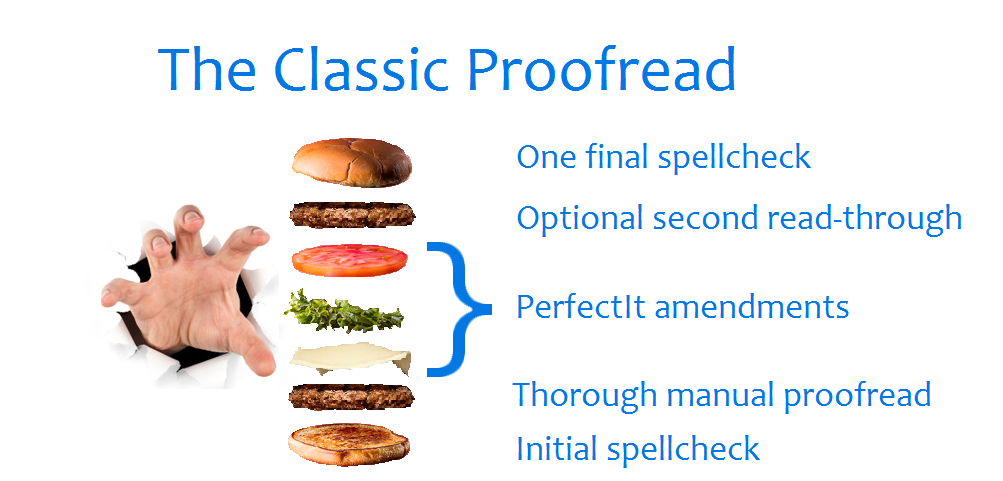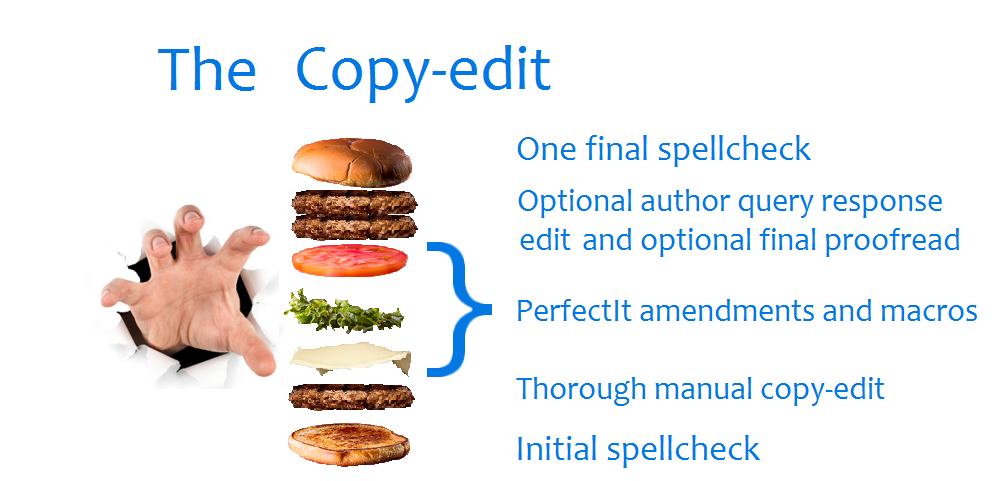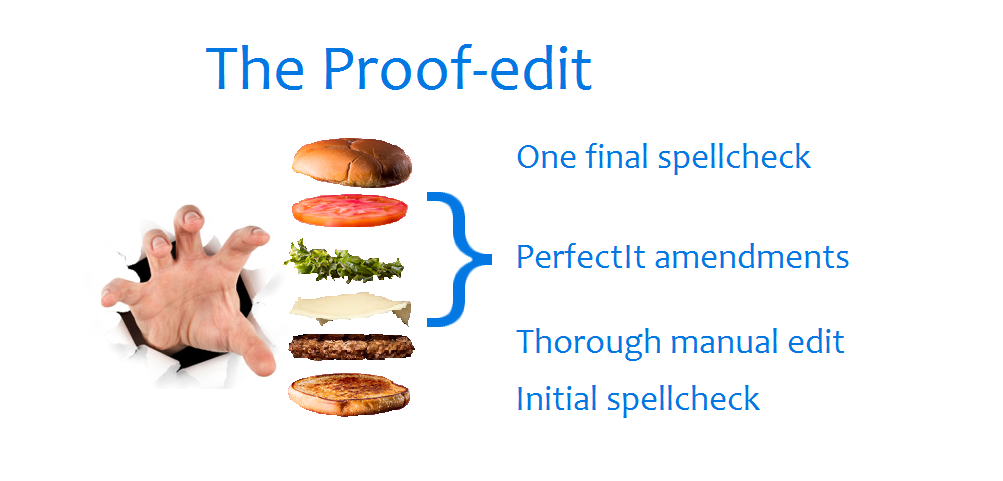"Proofreading" service examples
In this article, with the help of the build-a-burger customised proofreading service analogy, I share some examples of the levels of proofreading, proof-editing and copy-editing services that have been applied to some typical projects (anonymous, of course).
The "classic" proofreading service
Perhaps this is misnamed, since many proofreaders and copy-editors would say that a "classic" proofread is the final check in traditional publishing that focuses on things like line breaks, hyphens, page numbers and any final little details. Historically, it cost a lot of money to make changes at this stage, and numerous other people would have worked on it before it got to the proofreading stage.
When I say "classic" proofread, I mean working for the author directly (sometimes called author editing, as explained by Kateproof), and usually no one else has worked on the file so the task is necessarily hard to define exactly, but the key components of the process burger when I do a proofread are shown below (from the bottom up, like you're building the burger):

A typical project for which this would be the appropriate approach would be something where the file has already been edited, critiqued or copy-edited, usually written by an author (or authors) with a very good grasp of the language and the requirements of the document (e.g. reference systems). In my experience, this almost never happens, and it is far more common for clients to want a proof-edit that includes some other aspects of copy-editing.
The use of the word proofread here is arbitrary for most projects. If I agree to proofread but then find that some things aren't quite right that would fall into the copy-editing or editing categories, then I will do my best to fix them. Like a plumber who makes good a bit of plastering while they're there.
The copy-editing service
Because the remit of the proofreading service is rarely as basic as dotting Is, crossing Ts and checking pagination and format, the copy-editing service might seem like the same show as the proofreading service, except that the level of detail and depth to which the service delves is deeper. Full details are given on the services page, but from the burger's point of view, the first manual proofread becomes a manual copy-edit, and there would be the recommendation for the second read-through to be done after a series of author queries are addressed.

If time does not permit, then a final proofread can be done and the author queries will have to be addressed without a final check of the alterations made. This all depends on your deadline and budget as it takes me longer to do extra checks, and it inserts a few days' delay into the delivery while I wait for responses to author queries to come back. And, of course, this time needs to be scheduled in around other projects that may be live at the time.
The proof-editing service
A relatively new term in the world of proofreading and copy-editing, the proof-edit is fast-food. It can be served up to meet a quick deadline, and is a once-over of copy-editing, where there is to be no further proofread stage, and the author is likely to review the proof-edited file, then submit it without further work. As far from the traditional publishing process as a service could be, the proof-editing service is increasingly an accurate description of what clients are looking for when they ask for a proofreading service.

The thorough manual proof-edit is a single burger, one read-through attempt to address the macroscopic editing requirements, and the finer proofreading details in one go. If deadline or funds are tight, then this can be offered as a good value, bite-sized service.
Examples of this service being appropriate include some student PhD theses that have passed the viva but need to be finalised for print: the deadline is looming and the language needs improving in terms of style, formatting, grammar, punctuation, flow and structure. Maybe some parts are better than others and it needs a mixture of fine-tooth-comb proofreading and some heavier editing, but there is not time for author queries or second-stage proofreading. This can also be suitable for multi-author technical reports where a proofreading service might traditionally miss out some higher-level issues that the proof-edit would catch.
And, of course, this is build-a-burger, so a second proofreading read-through can always be added to the service stack.
That's the joy of the bespoke proofreading and editing service: you get an individually tailored service that fits your project's requirements. The next article gives an example of when a copy-editing service had so many extras from the burger bar of editing that it ended up not being a proofreading service at all: it became the whoppy-edit!
